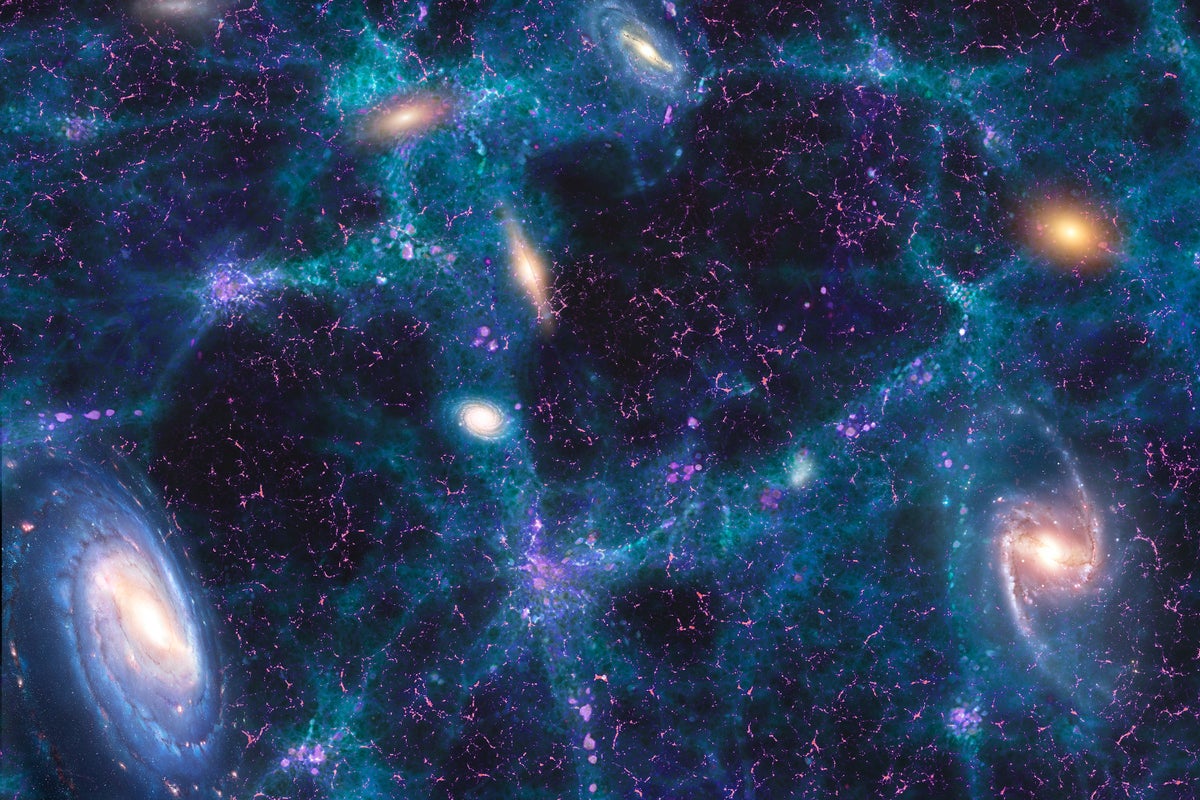
"The FRBs shine through the fog of the intergalactic medium, and by precisely measuring how the light slows down, we can weigh that fog, even when it's too faint to see."
"Astronomers have long struggled to see and study the dilute, dark gas and dust between galaxies, depicted in various cosmic structures as blue and purple filaments."
Astronomers have successfully utilized fast radio bursts (FRBs) to uncover the universe's previously elusive ordinary matter. This matter, made up of baryons, had been missing due to its incredibly diffuse distribution in space. Unlike dark matter, which remains invisible, this ordinary matter interacts with light, allowing it to be detected through FRBs. By measuring how light is affected while passing through the intergalactic medium, researchers have been able to account for this obscure baryonic matter, illuminating a significant aspect of our universe's composition that had long been a point of contention in cosmology.
Read at www.space.com
Unable to calculate read time
Collection
[
|
...
]